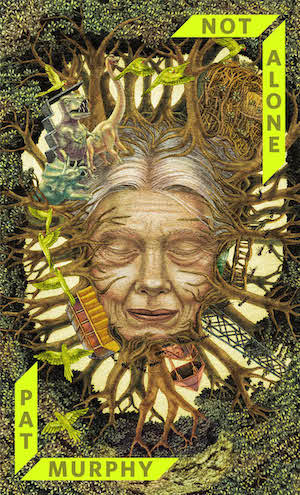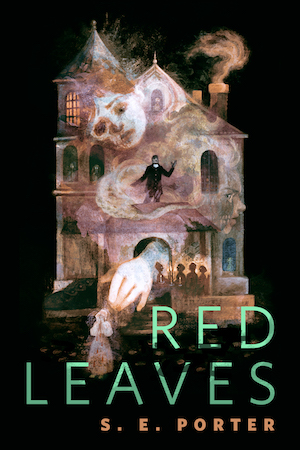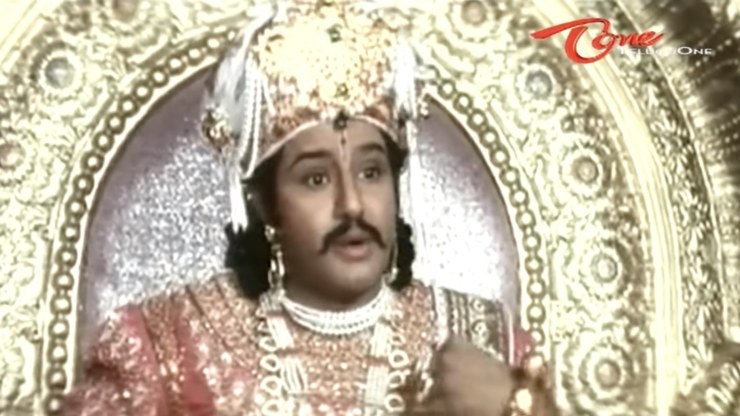Aditya 369 (Telugu: ఆదిత్య 369) (1991) Directed by Singeetam Srinivasa Rao. Written by Singeetam Srinivasa Rao. Starring Balakrishna Nandamuri, Mohini, Suthivelu, Tinnu Anand, and Master Tarun.
During the first part of the 16th century, the emperor Krishnadevaraya ruled over the Vijayanagara Empire, which encompassed most of the Indian subcontinent. He’s considered one of the greatest rulers in Indian history due to his skills as an administrator and a military leader. He’s also remembered for his patronage of literature in several languages. He was a poet himself, and his court was home to the Ashtadiggajas, a group of eight highly revered Telugu scholars and poets. Krishnadevaraya’s reign is regarded as a golden age of Telugu literature.
He did not, as far as I know, solve court conflicts with dance-offs.
Probably.
It seems unlikely.
But who can say? Anything is possible!
I’ve known since I started writing this column that it’s ridiculous to attempt a global scope without including Indian cinema. Indian filmmakers produce more than two thousand films every year, in several languages, with ticket sales numbering in the billions. Indian cinema got its start pretty much as soon as it was physically possible: the short silent films of the Lumière brothers were shown in Mumbai in 1896, the same year they were shown in London, and only a year after their debut in Paris.
The earliest Indian films were documentaries or recordings of stage plays, but that quickly evolved, and by the 1910s Indian filmmakers were producing full-length silent feature films. Many of those early films have been lost, but they were made by filmmakers all across India and feature intertitles in several different languages. The first sound film came in 1931 with the Hindustani-language Alam Ara, and talkies in numerous other languages followed immediately.
And, ever since then, the Indian film industry has never slowed down. The actual numbers vary across sources, but according to the UNESCO Institute for Statistics, India regularly produces roughly twice as many films as the next most productive film industries (the U.S., China, and Japan), and those films are made in dozens of languages (38 languages in 2021-22, for example).
A quick note: In the West, a lot of people still erroneously use “Bollywood” to refer to the entire Indian movie industry, but Bollywood specifically refers to the Hindi-language films that are often (but not always) produced in Mumbai. But that’s only a part of the Indian film industry—a large and lucrative part, yes, but definitely not the whole thing. The next-largest chunk of the industry is “Tollywood,” the Telugu-language films produced in the southern Indian city of Hyderabad. I do think Western film critics and journalists are getting better with the distinctions in Indian cinema, especially with Telugu films like RRR (2022) getting so much international attention. (Now “Naatu Naatu” is stuck in your head again. I’m not sorry.)
(It occurs to me that if Thomas Edison had gotten his way and the American film industry remained on the East Coast, people would have to come up with punny names for non-American film production locations based on West Orange, New Jersey, rather than Hollywood.)
But I’ll be honest: the huge breadth of Indian cinema is not actually very relevant for talking about this week’s movie. Because even if you have only the most surface-level knowledge about Indian films, Aditya 369 is probably exactly what you would have imagined an Indian time-travel romance action film from the early ’90s to be. It’s got romance, action, adventure, crime, history, both motorcycle chases and horses chases, physically impossible fight scenes, a mad scientist, a plucky kid, recitations of classic poetry, and choreographed musical numbers. And a dance-off.
That is, it fully embodies two key traits common to so many Indian films: the gleefully madcap everything-but-the-kitchen-sink approach to blending genres (called “masala,” like a blend of spices), and the music.
Director Singeetam Srinivasa Rao is a huge name in South Indian cinema. He’s currently 92 years old and still going strong with a filmography that includes more than 60 films in at least five languages across just about every possible genre, from commercial comedies to serious historical tales to experimental films to social dramas to animation. By his own telling, he had been interested in time travel stories since reading H.G. Wells’ The Time Machine in school, and he decided to make the film after chatting about the idea when he was seated next to producer S.P. Balasubrahmanyam on a flight. This was just a few years after Back to the Future (1985) and Bill and Ted’s Excellent Adventure (1989), so wacky time travel movies were internationally popular and successful.
Aditya 369 begins with a diamond heist. Wealthy criminal Raja Varma (Amrish Puri) has amassed a collection of priceless historical objects, and he wants to add a diamond that once belonged to Krishnadevaraya. He has a corrupt museum curator (Gollapudi Maruti Rao) to help him.
If you don’t know what kind of film you’re about to watch going in, the first few minutes of setup will certainly make it clear: Raja Varma is the kind of criminal who keeps a quartet of violinists around to punctuate all of his pronouncements with thematically appropriate music.
Raja Varma’s two henchmen (Tanikella Bharani and Babu Mohan) go to steal the diamond. On that same night, Kishore (Master Tarun) is experiencing something all elementary school students expect to at some point: getting locked in a museum overnight. Kishore was left behind after a school field trip, so he’s in the museum to witness the theft. When he escapes, Kishore is saved by Krishna Kumar (Nandamuri Balakrishna), whose girlfriend Hema (Mohini) is the daughter of time machine inventor Professor Ramdas (Tinnu Anand).
A lot happens in this film; I won’t try to explain it all. I will just mention that I think it takes a little too long to get to the time travel, just as I also think the first musical number has too much hip-thrusting choreography (and I’m a K-pop fan! I have seen some hip-thrusting!). But it’s all in good fun, so I don’t really mind.
Nobody believes Kishore when he tells them about the jewel thieves, because the diamond has been replaced by a fake. So when he hears about Professor Ramdas’ time machine, he recruits some of his friends from the hospital where he is recovering. Their plan—it makes perfect sense in kid logic—is to use the time machine to go back to stop the robbery before it happens.
But due to an unrelated sequence of events, Krishna Kumar and Hema are the ones who end up accidentally traveling through time, with a hapless police constable (Suthivelu, whose character is never given a name) along for the ride. That’s how the three adults end up in the 16th century court of Krishnadevaraya (also played by Nandamuri Balakrishna).
Let’s take a step back and talk about time travel fiction for a moment. Time travel, like any other science fictional plot device, can be used to tell just about any kind of story, but there do tend to be broad patterns. There are stories like The Time Machine that visit the future in order to say something about the present, and stories like Back to the Future that visit the past to rearrange the timeline. There are a whole slew of time loop stories (an entire subgenre of sci fi film; we’re saving those for another month), as well as stories where people travel through time specifically to solve problems, or cause problems, or steal a whale.
One element that tends to go along with all of these types of stories is the idea that changing something in the past will, in fact, alter the present and future. Stepping on a butterfly, starting a band, punching a bully—in time travel stories, these are actions that can fundamentally change the world.
Around about the time we got to the dance-off, I realized that Aditya 369 had, as a whole, simply decided not to do that.
It’s not as though the film is making a particular statement about the immutable nature of history; instead, it’s more that the characters assume their actions will fit into both the past and the future without getting into cosmological implications of it all. I admit it took me a moment to adjust, because I am so used to approaching time travel stories by asking: “What is going to change?”
But this movie doesn’t care about any of that, nor does it care about establishing any sort of ideal or superior vision of the past. Kirshna Kumar tells the people in the 16th century all about the modern world; he talks about democracy and elections, he explains television and movies, he shows off his boombox, he impresses the emperor with his knowledge of things to come. There is never the least concern that this knowledge or anything else they say or do will alter the course of history—a history that is familiar to its audience, as the eight poets were real men who lived in the patronage of Krishnadevaraya’s court.
So we get a dance-off in the emperor’s court. We get some clumsy scheming, an attempted theft, a thwarted execution, a daring escape. There’s an attempted seduction scene in which the main character is wearing a garishly colorful sweatshirt from the Arizona Balloon Festival, because nothing about this visit to the past is about trying to blend in or avoid making ripples.
When Krishna Kumar, Hema, and the police constable finally leave the 16th century, they overshoot the present day (none of them know how to drive the time machine) and end up in the year 2504. There they find a world that has been rendered a radioactive wasteland thanks to World War III. Humans have been driven underground and live in a scientifically advanced but highly controlled society. There is technology to read minds and repair time machines, but the air is poisonous and the musical number is painfully autotuned. Our characters learn, via a news source from the past, that Krishna Kumar will be killed when he tries to stop Raja Varma from stealing Krishnadevaraya’s diamond.
They go back to 1991 anyway, and Krishna Kumar still tries to stop Raja Varma from taking the diamond. He survives, but the characters assume they shouldn’t have taken the newspaper they saw in the future at face value; it doesn’t occur to them that they might have changed his fate. They get their happy ending.
They also don’t seem very worried about the future nuclear war, or at least not to the point where wanting to prevent it ever comes up. We’ve seen so many sci fi movies where a potential future WWIII is directly related to the aftermath of WWII that it’s notable when that element is simply missing. I am not familiar enough with Indian cinema to know if that’s unique to this movie. I do know that India had a very complicated relationship with WWII (to say the least), and I know that films about independence from the British Empire and the partition of India and Pakistan unsurprisingly tend to occupy that serious, historical cinematic space that is taken up by WWII films in other countries.
Time travel can be about anything, and after I got used to it, I came around to enjoying the fact that in Aditya 369, what it’s about is hijinks and shenanigans. It cares about the nature of causality and paradox exactly as much as it cares about how a man who works at a TV factory can fight off a dozen armed henchmen by doing acrobatic flips, which is to say: not at all.
Aditya 369 is regarded as quite influential in Indian cinema precisely because it took a sci fi topic that Indian movies hadn’t tackled before and integrated it so completely into the cavalier, genre-hopping style of Indian cinema. It neither reveres the golden ages of the past nor fetishizes the potential dark ages of the future. It is, in all its early ’90s glory, a celebration of the present—and of solving thorny political situations with a glorious dance-off.
What do you think about Aditya 369 as the first Indian time travel movie? And as an entry into the global pantheon of wacky time travel films? How would you fare in a dance-off in the 16th century royal court of your choice? And yes, you did in fact see stills from Star Wars and other sci fi films in some of those trippy timey-wimey sequences. No, I don’t have an explanation for that beyond, “Because they felt like it.”
Next week: We could not possibly achieve a more extreme tonal shift than pivoting to La Jetée (1962), a 28-minute experimental French film. Watch it on Criterion, Amazon, Apple.










